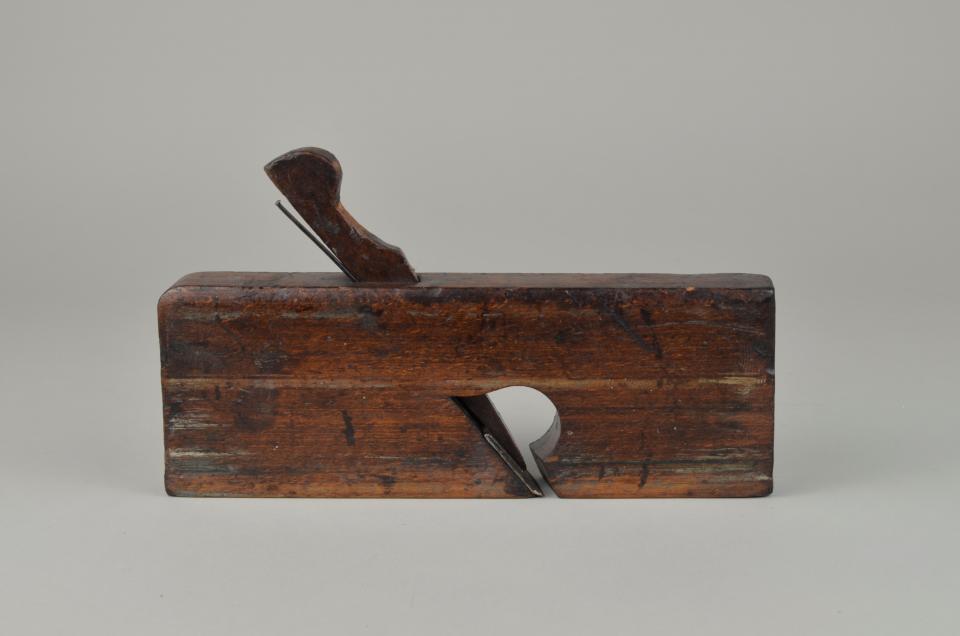
L: 23.6cm W: 2.9cm H: 13.5cm
a- L: 23.6cm W: 2.9cm H: 8.5cm
b- L: 15.6cm W: 2.4cm H: 1.0cm
c- L: 15.1cm W: 2.1cm H: 0.2cm
A wooden skewed rabbet plane composed of 3 parts.
a- The body is rectangular and made of a brown hardwood. The width is consistent throughout. The throat cuts diagonally through the middle of the body. A bell-shaped hole at the bottom of the throat is visible on both the front and back sides. Stamps on the toe read: "Martin & Shaw" (x2); "I BLOWER"; "D THOMAS". Stamp on the heel reads "I BLOWER".
b- The wedge is made of the same hardwood as the body. It tapers to a point on one end and is rounded in a parabolic form on the other. A cut-out below the head allows for easy handling.
c- The iron is a narrow strip of ferrous metal. It abruptly widens near the cutting edge. The cutting edge is flat and perpendicular to the length. The width of the cut is 3/4".
Rabbet planes are used to cut straight grooves, or rabbets, into a working piece. They are traditionally used for drawer bottoms or rear walls. They can be used in conjunction with a corresponding tonguing plane, which creates two parallel slits in a piece of wood. These create two pieces that fit together perfectly for joining work.An advantage of the skewed iron is that it helps to draw the plane into the corner of the rebate, and it throws the shaving to one side which helps to prevent choking. For extra fine work, capped irons are sometimes used.
